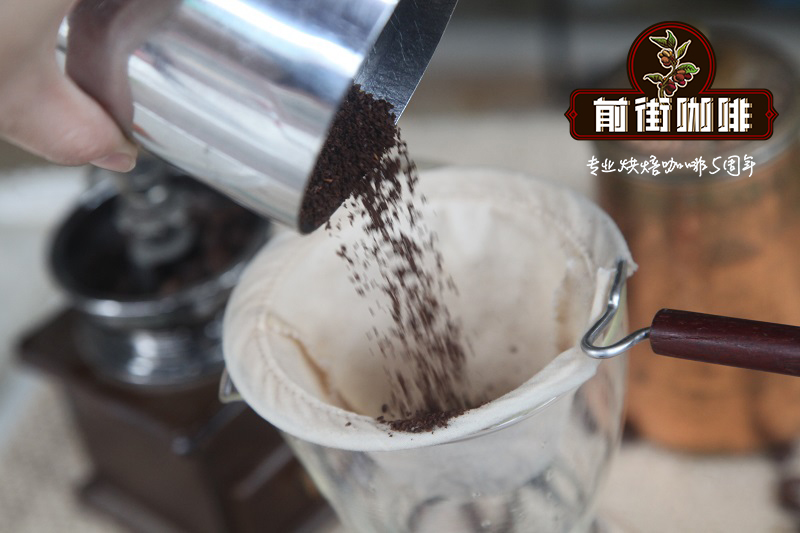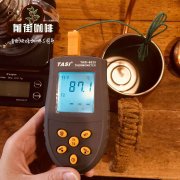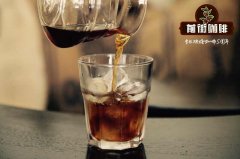How do I make coffee in Kam Chu Valley, Kenya? Information introduction of Kenya AA washing TOP Enbu processing Plant

Professional coffee knowledge exchange more coffee bean information please follow the coffee workshop (Wechat official account cafe_style)
◆ Kenyan coffee variety
Bourbon Bourbon was first brought to Kenya for planting. In the 1950s, the then agricultural research institution ScottLaboratory selected two excellent hybrids, SL-28 and SL-34, through unremitting efforts, subverting the long-standing prejudice of artificial breeding without excellent natural varieties. SL-28 and SL-34 help Kenyan coffee to form its own unique flavor characteristics and establish a perfect reputation in the coffee industry.
According to botanists in SL laboratory, SL28 and SL34 are genetic variants. Among them, SL28 has a mixed pedigree of French missionaries, mocha and Yemeni Tibica. The goal of cultivating SL28 was to mass produce coffee beans with high quality and resistance to diseases and insect pests.
Although the yield of SL28 was not as high as expected, the copper leaf color and broad bean-shaped beans have great sweetness, balance and complex flavor, as well as remarkable citrus and plum characteristics. SL34 is similar to SL28 in flavor, with a heavier, fuller and cleaner finish than SL28, except for the complex acidity and great sweetness of the finish. SL34 has French missionaries, bourbon, and more Tibica ancestry. Dou looks similar to SL28, but is more adaptable to sudden heavy rain. It is these two important varieties that lead us to the unique Kenyan style: strong acidity, rich taste and beautiful balance.
◆ Coffee growing area of Kenya
The coffee producing areas in Kenya are mainly concentrated in the plateau areas represented by Mount Mt.Kenya. Tropical climate, acid red volcanic soil provides a natural and suitable growth environment for coffee. The seven major producing areas are the most famous, including Nieri, Sika, Chiambu, Geliniya, Ruiru, Mulanga and the western side of Mount Kenya, with the main producing areas such as Nyeri and Ruiru in the middle.
◆ Kenya Coffee processing
Large farms usually have independent treatment facilities. A large number of small farmers usually pick ripe coffee fruits by hand. Coffee picking is a labor-intensive job that requires the whole family to deploy and even hire workers during the harvest season. The fresh fruit of the picked coffee needs to be delivered in time to the cooperative-owned coffee processing plant for pulping, which may be carried by ox carts, pick-up trucks or trucks. After peeling, Parchmentcoffee is briefly kept in the cooperative's processing plant and sent to a privately owned factory for shelling treatment.
◆ Kenya Coffee Grade
Kenya is a well-known producer based on the size of coffee beans. It is usually divided into nine grades, according to the bean type, there are PB (round beans, accounting for about 10% of the total output), in addition, there are E (elephant beans), AA, AB, C, T, TT, MH, ML according to size. The best coffee grade is bean-shaped berry coffee PB, followed by AA++, AA+, AA, AB and so on.
Usually Kenyan coffee is classified as follows:
Hand-picked coffee fruit, picked by hand, picked out immature fruit (unripe), overripe fruit (overripe) and other defects, peeled, after about 36 hours of fermentation, placed on a metal grid for sun drying, in the processing plant to remove the seed shell (parchment), become a blue-green appearance of attractive Kenyan raw beans.
These beautiful raw beans are graded according to particle size (size), shape (shape) and weight (weight):
1) E:KenyaE, elephant beans, elephantbean,18 and above (including round beans)
AA:KenyaAA,17-18 mesh
AB:KenyaAB,15-16, which is a mixture of An and B.
TT: light beans selected by AA and AB by airflow separator
Above PB:KenyaPB,15, round bean
CRV 12-14 mesh and PB light bean screened by air flow separator
Under 12 eyes, there are more defective beans, chopped beans and light beans.
HE: beyond the above level becomes HE (HulledEars)
2) the raw beans without official standard grading are UG (ungrade).
E,AA,AB,PB → UG1
C,TT,T,HE → UG2
(note: class An over 17 mesh (6.8mm), class B over 16 mesh (6.3mm) 18 mesh = 18cm 64 inches, 1 inch = 25.4mm)
Classification diagram
This Kenyan coffee comes from the Enbu processing Plant (Embu Washing Station) in the Gichugu region and grows in Manyata-Enbu County on the eastern slopes of the Kenyan Mountains from 1550 to 1750. The variety is the classic Kenyan SL28,SL34, coupled with the large temperature difference between day and night, and the Kenyan red phosphate soil, making sweet and sour the main Kenyan flavor tone.
Jinchugu was founded in 1970 and cooperated with Kamviu, Gakundu and Ka Kui washing Plant to form the Gakundu Farmers' Cooperative. There are 980 coffee farmers in Jinchu Valley and 3600 small farmers are registered in the whole cooperative. In Enbu county, nearly 85% of coffee cultivation comes from small farmers. They picked the ripe coffee fruit and sent it to the washing station for centralized treatment. the coffee fruit was peeled in the Enbu processing plant, fermented overnight, washed and dried naturally in an elevated shed.
This Kenya is different from the previous Kenya, which is dominated by berry flavor. This time it has a delicate red wine with sour fruit, cherry sweetness, BlackBerry lips and teeth, and a tail of black plum and sugar.
Product name: AA TOP of Jinchu Valley, Kenya
Producing area: Jinchu Valley (Gichugu Division,Kirinyaga East District)
Producer: Enbu processing Plant (Embu Washing Station)
Treatment method: Kenyan double washing treatment
Altitude: over 1550-1750 m
Variety: SL28,SL34
Baking degree: medium and shallow baking
Flavor: Cherry, black plum, honey, BlackBerry, Sugar cane juice, sour red wine
Cooking suggestions:
Water temperature: 90-94 ℃
Scale: medium roughness grinding
It is suggested that the ratio of extraction powder to water should be between 1:15 and 1:18 (the concentration should be adjusted according to your own taste)
END
Important Notice :
前街咖啡 FrontStreet Coffee has moved to new addredd:
FrontStreet Coffee Address: 315,Donghua East Road,GuangZhou
Tel:020 38364473
- Prev

Kenya AA Coffee Bean-Kiambu KIRURA Coffee How Much Does Kenya Coffee Bean Cost
Professional coffee knowledge exchange More coffee bean information Please pay attention to coffee workshop (Weixin Official Accounts cafe_style) Kenya coffee beans-Kiambu KIRURA coffee how much money Kenya coffee beans Kenya Kiambu Kirura Kenya coffee producing area-Kiambu Kirura is one of the 13 washing stations of Komothai, the largest cooperative in Kiambu County. The area is historical
- Next

Kenya berry Camilla washed coffee tastes good? introduction to the flavor characteristics of washed Kenyan coffee beans
Professional coffee knowledge exchange more coffee bean information please follow the coffee workshop (Wechat official account cafe_style) Kenya Coffee-Mugan Goo processing Plant Berry Camilla Coffee beans introduction: Mukangu factory and eight other washing stations Ragati,Nguguini,Kiangai,Kibingoti,Thunguri,Kianjege, Chewa and Kibirigwi constitute Kibir
Related
- Detailed explanation of Jadeite planting Land in Panamanian Jadeite Manor introduction to the grading system of Jadeite competitive bidding, Red bid, Green bid and Rose Summer
- Story of Coffee planting in Brenka region of Costa Rica Stonehenge Manor anaerobic heavy honey treatment of flavor mouth
- What's on the barrel of Blue Mountain Coffee beans?
- Can American coffee also pull flowers? How to use hot American style to pull out a good-looking pattern?
- Can you make a cold extract with coffee beans? What is the right proportion for cold-extracted coffee formula?
- Indonesian PWN Gold Mandrine Coffee Origin Features Flavor How to Chong? Mandolin coffee is American.
- A brief introduction to the flavor characteristics of Brazilian yellow bourbon coffee beans
- What is the effect of different water quality on the flavor of cold-extracted coffee? What kind of water is best for brewing coffee?
- Why do you think of Rose Summer whenever you mention Panamanian coffee?
- Introduction to the characteristics of authentic blue mountain coffee bean producing areas? What is the CIB Coffee Authority in Jamaica?

